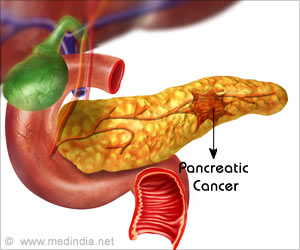Light scattering tool may aid accurate, early pancreatic cancer diagnosis and differentiates from benign, harmless pancreatic cysts, which don’t need surgery.
- Pancreatic cancer mortality rates are high, since current diagnostic tools don’t offer early and accurate diagnosis.
- Also no non-invasive methods are available to differentiate benign, harmless pancreatic cysts from precancerous cysts.
- Light spectroscopy is non-invasive and aids accurate pancreatic diagnosis. It helps to distinguish from benign lesions which does not require surgery.
The study authors felt the need to develop an accurate yet non-invasive technique to diagnose pancreatic cancer, which has high mortality rates among cancers since methods to diagnose and treat the disease in its early stages still eludes the medical fraternity.
TOP INSIGHT
Light scattering spectroscopy diagnosis matches post-operative histopathological diagnosis, so that patient need not undergo unnecessary surgery for benign cysts.
New Light Spectroscopy Tool
The novel device uses Light Scattering Spectroscopy (LSS) to determine the structural changes that occur in cancerous or pre-cancerous cells by bouncing light off tissues and analysis of the reflected spectrum.
The findings could help physicians' in deciding the need for surgery in pancreatic tumors, a procedure carrying high risk. At present, more than half of these procedures turn out to have been unnecessary due to the absence of tools for accurate diagnosis.
"About one-fifth of pancreatic cancers develop from cysts, but not all lesions are cancerous," said Perelman, who is also Professor of Medicine and Professor of Obstetrics, Gynecology and Reproductive Biology at Harvard Medical School. "Considering the high risk of pancreatic surgeries and the even higher mortality from untreated pancreatic cancers, there's an obvious need for new diagnostic methods to accurately identify the pancreatic cysts that need surgical intervention and those that do not."
Details and Findings of the Study
To test how accurate the LSS system was, Perelman and colleagues collected and analyzed the reflected light from 13 cyst specimens of patients who had undergone recent surgery.
-
Next, they compared their findings with the results of spectroscopic analysis from
- Pre-operative imaging
- Fine needle aspiration cytology (FNAC) biopsies and
- Definitive post-operative tissue analysis, the gold standard for accurate diagnosis.
Physicians spent only about a couple of minutes or less measuring scattered light from the internal cyst surface before collecting fluid from the cysts as part of the traditional biopsy. Out of nine patients whose cysts had been diagnosed as either cancerous or benign, all were correctly identified by LSS.
Pancreatic cysts are a fairly common occurrence, and current high-definition imaging techniques such as MRI and CT imaging are detecting them with increasing frequency. However, in spite of their high resolution, these modalities only provide physicians with limited information about cysts' malignant potential.
Currently, surgeons rely on minimally-invasive fine needle aspiration (FNA) biopsies to determine the malignant potential in pancreatic cysts. The biopsy needle aspirates fluid from the cysts, which is then microscopically studied for the presence of cancer cells and other telltale signs of the disease. However, this cytological analysis fails to detect cancer about half the time. As a result, high-risk surgery followed by post-operative histological analysis of removed lesion remains the only definitive method of diagnosis of pancreatic cysts’ nature.
In conclusion, though more testing with the LSS tool may be necessary to establish its accuracy, light spectroscopy nevertheless represents a major breakthrough in pancreatic cancer diagnosis.
"This tool is a technology that is transformative in the evaluation of pancreatic cysts," said co-lead author Douglas K. Pleskow, MD, Clinical Chief of the Division of Gastroenterology and Director of the Colon and Rectal Cancer Program at the Cancer Center at BIDMC. "It provides a high level of precision in the detection of potential malignant transformation of these cysts."
References:
- Light scattering spectroscopy helps doctors identify early pancreatic cancer - (https://www.eurekalert.org/emb_releases/2017-03/bidm-lss030917.php)
Source-Medindia
 MEDINDIA
MEDINDIA




 Email
Email










